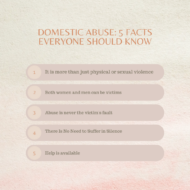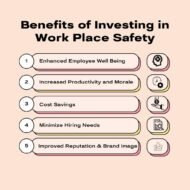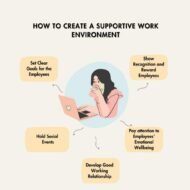Currently Browsing: Human Resource
Posted by Managementguru in Financial Management, How To, Personal Finance
on Aug 23rd, 2023 | 0 comments

Managing personal finances is crucial for achieving financial stability and building wealth. Here are ten best personal finance tips to help you make smart decisions and improve your financial situation. Create a Budget Develop a budget to track your income and expenses. Allocate your money to cover necessary expenses, savings, and debt repayment, and be mindful of discretionary spending. Save and Invest Make saving a priority. Aim to save a portion of your income each month and invest it wisely to grow your wealth over time. Consider diversifying your investments and seek professional advice if needed. Minimize Debt Avoid excessive debt and work on reducing existing debt. Prioritize high-interest debts, such as credit card debt, and consider strategies like debt consolidation or negotiation to lower interest rates. Emergency Fund Build an emergency fund to cover unexpected expenses, such as medical bills or car repairs. Aim to save three to six months’ worth of living expenses to provide a safety net during challenging times. Track Your Expenses Monitor your spending habits and identify areas where you can cut back. Use personal finance apps or spreadsheets to track your expenses and gain insights into your financial behavior. Plan for Retirement Start saving for retirement as early as possible. Contribute to employer-sponsored retirement plans, like 401(k) or IRA, and take advantage of any matching contributions. Explore other retirement savings options available to you. Insurance Coverage Assess your insurance needs and ensure you have adequate coverage for health, life, home, and auto insurance. Insurance can protect you from unexpected financial setbacks. Avoid Impulsive Purchases Before making a purchase, especially big-ticket items, consider if it aligns with your financial goals. Avoid impulsive buying and practice mindful spending. Continuous Learning Invest in financial literacy. Read books, follow reputable personal finance blogs, or take online courses to enhance your knowledge about money management, investing, and financial planning. Seek Professional Advice If you’re overwhelmed or unsure about your financial decisions, consult with a certified financial planner or advisor. They can provide guidance tailored to your circumstances and help you create a comprehensive financial plan. Remember, personal finance is a long-term game. Consistency, discipline, and ongoing evaluation of your financial strategies are essential for achieving your...

Posted by Managementguru in How To, How to Blog, SEO
on Aug 8th, 2023 | 0 comments

Unlocking Blogging Success: Exploring Popular Niches and 5 Authentic Monetization Strategies Blogging has become a prominent medium for sharing ideas, information, and experiences. From personal diaries to professional advice, blogs cater to diverse interests and topics. However, not all blogs achieve equal success. 🌟 To thrive in the competitive digital landscape, bloggers must identify popular niches and leverage authentic monetization strategies. This article delves into some of the popular niches for blogging success and outlines five genuine ways to monetize a blog effectively. Popular Niches for Blogging Success 📝Lifestyle and Personal Development: Embracing self-improvement, mental health, travel, and overall well-being resonates with many readers seeking guidance and inspiration in their lives. 📝 Health and Fitness: The health and fitness niche remains evergreen, with a vast audience seeking information on workouts, nutrition, and general wellness. 📝 Finance and Money Management: Providing tips on budgeting, investing, and money-saving techniques helps readers secure their financial future and gain financial literacy. 📝 Food and Recipe Blogs: Food blogs that offer tantalizing recipes, cooking tips, and restaurant reviews continuously attract food enthusiasts looking to satisfy their culinary cravings. 📝 Technology and Gadgets: In an increasingly tech-driven world, tech blogs discussing gadgets, reviews, and tech-related news enjoy a dedicated following. 5 Authentic Ways to Monetize a Blog 💰 Affiliate Marketing: Partner with brands and promote their products or services through affiliate links. Earn a commission whenever a reader makes a purchase through your unique link. 💰 Sponsored Content: Collaborate with relevant brands to create sponsored posts that align with your blog’s niche. Ensure transparency and authenticity to maintain readers’ trust. 💰 Digital Products and E-books: Leverage your expertise by creating and selling digital products like e-books, courses, or templates. These offerings provide value to your audience and can be a steady source of income. 💰 Advertising and Display Ads: Implement pay-per-click (PPC) or display ads through platforms like Google AdSense to earn revenue based on the number of ad clicks or impressions on your blog. 💰 Membership or Subscription Model: Offer exclusive content, premium features, or a community forum to subscribers who pay a monthly or annual fee. This model fosters a loyal audience and provides consistent income. Monetization Tip: Regardless of the monetization method, focus on maintaining your blog’s authenticity, value, and user experience. Building trust with your audience is crucial for long-term success. In conclusion, blogging success lies in finding a popular niche that resonates with a dedicated audience. Embrace your passion, expertise, and creativity to deliver compelling content that engages readers and keeps them coming back for more. While monetization is essential for sustaining your blog, prioritize authenticity and integrity in your strategies. By striking the right balance between content quality and genuine monetization techniques, you can unlock the full potential of your blog and embark on a fulfilling and successful blogging journey. Blogging Tip – How to Structure A Blog Post To structure a blog post, you can follow this basic outline: ✨Title: Choose a catchy and informative title that grabs the reader’s attention. ✨Introduction: Write an engaging introduction that sets the tone and introduces the topic. ✨Body: Break the main content into logical sections or subheadings. Each section should cover a specific point or idea related to the main topic. Use paragraphs to elaborate on each point, providing supporting evidence, examples, and explanations. ✨Conclusion: Summarize the key points discussed in the blog post and reiterate the main takeaway or call-to-action. ✨Call-to-Action: Encourage readers to engage further, share the post, or take a specific action related to the content. ✨Images and Media: Incorporate relevant images, videos, or other media to make the post visually appealing and enhance understanding. ✨Proofreading: Before publishing,...

Posted by Managementguru in How To, Relationships
on Aug 7th, 2023 | 0 comments

Domestic abuse is still more widespread than many people care to believe in the 21st century and that’s why it’s imperative to understand exactly what it is and what can be done about it. As defined by the CDC, domestic abuse is also referred to as “intimate partner violence”. Domestic abuse or violence can occur between heterosexual as well as same-sex couples. 1 in 4 women is reported to have experienced some form of domestic violence with ‘only’ 1 in 9 men reporting being victimized. In other words, women are more than twice as likely to be the victims of domestic abuse, and it is to them that we speak today. Here are three things every woman should know. 1. It Is a Crime in All States Although domestic violence is a crime in all states, each state has similar but different wording within the law. In Illinois, for example, the laws are set forth in the Illinois Domestic Violence Act that clearly defines exactly what constitutes domestic violence, DV, and what the consequences for being found guilty could be. Also, you should know that if you have been a victim of DV, you have the right to be compensated for any injuries, physical or emotional, you have received. This would be where you would consult with an Illinois lawyer for abuse to seek the compensation you so rightfully deserve. Also, as stated in the law, DV relates to any intimate relationship, so it is not only violence perpetrated by a husband. Any person a woman is romantically involved with can be the perpetrator, and they don’t even need to be sexually involved either! 2. There Is No Need to Suffer in Silence Often, women suffer in silence. Sometimes it is fear of being victimized even more severely. Men know that it is a criminal act to abuse or violate their partner, yet they are not always in control of their actions. You should know that help is out there and if you are uncertain where to find it, one thing you can do is go to the emergency room at a local hospital. They will help you find resources to ensure your safety and at the very least call law enforcement for you if you fear for your safety. There is a National Domestic Violence Hotline you can also call, and all calls are confidential. They will tell you where Domestic Abuse Shelters are in your area and can help put you in touch with other resources as well. 3. It Is in Your Power to Put an End to It From filing a restraining order to seeking shelter in a Domestic Violence Shelter for women, there is always something you can do to put an end to it. There is no need to continue suffering abuse and if you think it will ‘get better,’ 99.9% of the time it will NOT end without intervention. Being the victim of DV is no longer the societal stigma it once was and few people ‘blame’ the woman anymore. You are urged to be strong and proactive. Take steps to protect yourself from further abuse because no one deserves to be the recipient of violence. If nothing else, contact that domestic abuse lawyer mentioned above. They can point you in the right direction to get the help you need....

Posted by Managementguru in Employee Safety, Human Resource, Productivity, Work Environment
on Jul 11th, 2023 | 0 comments

In today’s rapidly changing business landscape, organisations are constantly looking for ways to enhance their performance and maintain a competitive edge. While many factors contribute to a company’s success, one aspect that should never be overlooked is workplace safety. Investing in safety measures not only protects employees from harm but also yields significant benefits for businesses. In this article, we will explore why workplace safety is a smart business decision, considering both the immediate and long-term advantages it offers. Enhanced Employee Well-being By prioritising workplace safety, organisations demonstrate a commitment to the well-being of their employees. Safe working conditions foster a sense of trust, respect, and loyalty among the workforce. When employees feel safe and valued, their morale and job satisfaction increase, leading to improved productivity and reduced turnover rates. Something as simple as a good pair of work boots could save lives with a prevented slip, so investing in quality will be felt throughout the organisation. Increased Productivity and Efficiency Safety investments often go hand in hand with process improvements and risk mitigation strategies. Implementing safety protocols and providing necessary training equips employees with the knowledge and tools to perform their tasks efficiently and effectively. By reducing the likelihood of accidents, injuries, and illnesses, businesses can minimise downtime, maintain continuity in operations, and optimise productivity levels. Safe work environments also promote better focus and concentration, leading to higher quality output and fewer errors. Cost Savings Investing in workplace safety can result in substantial cost savings for businesses in the long run. While there may be upfront expenses associated with safety equipment, training, and compliance, these investments can significantly reduce the financial burden of accidents, injuries, and workers’ compensation claims. By preventing workplace incidents, companies avoid the direct costs of medical expenses, legal fees, and property damage. It helps to bear in mind that businesses with strong safety records often benefit from lower insurance premiums and improved employee insurance coverage terms. Improved Reputation and Brand Image Companies that prioritise safety earn a reputation as responsible and ethical employers. A strong safety culture becomes a valuable selling point for attracting top talent, as job seekers are increasingly concerned about the work environment. By creating a safe and healthy workplace, businesses can differentiate themselves from competitors and build a positive brand image that resonates with customers, partners, and stakeholders. Such a reputation can lead to increased customer loyalty, trust, and ultimately, improved business performance. Compliance with Legal and Regulatory Requirements Workplace safety is not just a moral obligation; it is also a legal requirement. Governments and regulatory bodies set specific standards and guidelines to protect employees’ rights and ensure their safety at work. Investing in safety measures allows businesses to comply with these regulations, avoiding potential penalties, fines, and legal disputes. By staying updated with safety regulations, organisations can demonstrate their commitment to ethical practices and create a culture of compliance, further bolstering their reputation. Investing in workplace safety is undeniably a smart business decision with far-reaching benefits. As businesses navigate the complexities of the modern world, incorporating workplace safety into their strategic plans is not only the right thing to do but also a wise investment that pays off in more ways than...

Posted by Managementguru in Entrepreneurship, Human Resource, Organisational behaviour, Work Environment
on Jul 7th, 2023 | 0 comments

Depending on who you are, you will either love, hate, or be neutral about working. Either way, the reality that most of us have to face is that we must work, and we spend the majority of our time working. As such, it would be great if you felt safe and comfortable when working. However, this is often not the case. If you want to find ways to create a supportive working environment that fosters good health and wellbeing, then this article is just for you. 1. Make sure there is a good work-to-life balance If you work regularly and for many hours, it can be all too easy to spend too much time working. How do you know if you are spending too much time working? Well, it is pretty obvious that you are doing too much if you find yourself having little or practically zero time to do things other than work. Of course, for some professions, this is inescapable. However, it is important to find a balance between work and other aspects of your life for your own mental health and physical wellbeing. If you exert too much of your time and energy into working, your health will most likely decline, and you put yourself at greater risk of burning out. So, even if it is only an hour or two each day, it is important that you spend some time doing things that you love. This will, in turn, ensure that your working environment is more pleasurable as you will less likely associate it with negative sentiments. If your company does not do so already, try and create some social events for everyone to get involved with so they too can enjoy being at work. 2. Treat everyone with respect No matter who we are or what we have done, everyone is entitled to some degree of respect. If the working environment is a supportive one, everyone will respect and treat each other with care. There are a number of ways to foster meaningful respect at work which include finding common ground, paying attention to details, and being considerate and non-judgemental. While some of these traits may seem difficult to obtain, practice makes perfect. It is unlikely that you will master it first try; however, what is important is that you persevere for the sake of yourself, for others, and for the company. By doing so, you can help to reduce employee negativity. 3. Acknowledge and reward achievements Another great way to create a supportive work environment is by acknowledging and rewarding achievements. If you notice that a particular employee or colleague has gone above and beyond, or simply that they have worked well, it is important that their work does not go unrecognized. Instead, make sure to reward them. If you can do this, they will be more likely to feel valued, appreciated, and cherished and will enjoy being at work more. It can be as simple as rewarding them with their favorite chocolate or perhaps an experience that they have always wanted to...










